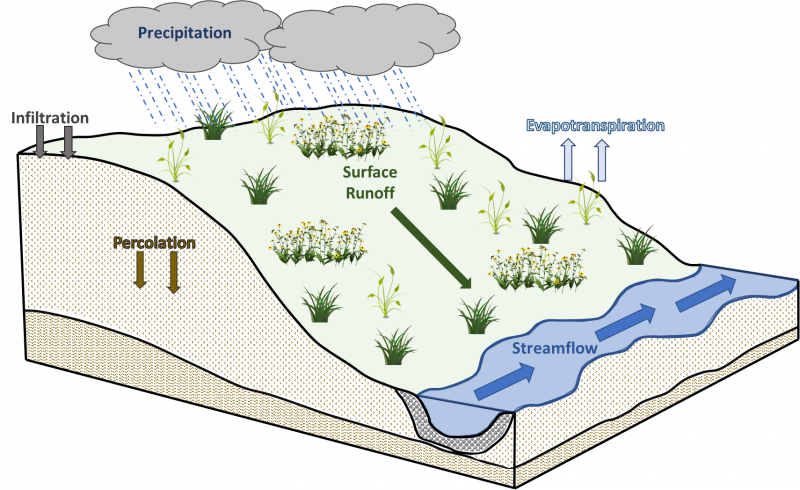
Natural Resources
Conservation Service
Ecological site R110XY018IL
Steep Gravel Prairie
Last updated: 4/22/2020
Accessed: 12/21/2025
General information
Provisional. A provisional ecological site description has undergone quality control and quality assurance review. It contains a working state and transition model and enough information to identify the ecological site.
MLRA notes
Major Land Resource Area (MLRA): 110X–Northern Illinois and Indiana Heavy Till Plain
The Northern Illinois and Indiana Heavy Till Plain (MLRA 110) encompasses the Northeastern Morainal, Grand Prairie, and Southern Lake Michigan Coastal landscapes (Schwegman et al. 1973, WDNR 2015). It spans three states – Illinois (79 percent), Indiana (10 percent), and Wisconsin (11 percent) – comprising about 7,535 square miles (Figure 1). The elevation is about 650 feet above sea level (ASL) and increases gradually from Lake Michigan south. Local relief varies from 10 to 25 feet. Silurian age fractured dolomite and limestone bedrock underlie the region. Glacial drift covers the surface area of the MLRA, and till, outwash, lacustrine deposits, loess or other silty material, and organic deposits are common (USDA-NRCS 2006).
The vegetation in the MLRA has undergone drastic changes over time. At the end of the last glacial episode – the Wisconsinan glaciation – the evolution of vegetation began with the development of tundra habitats, followed by a phase of spruce and fir forests, and eventually spruce-pine forests. Not until approximately 9,000 years ago did the climate undergo a warming trend which prompted the development of deciduous forests dominated by oak and hickory. As the climate continued to warm and dry, prairies began to develop approximately 8,300 years ago. Another shift in climate that resulted in an increase in moisture prompted the emergence of savanna-like habitats from 8,000 to 5,000 years before present (Taft et al. 2009). Forests maintained footholds on steep valley sides, morainal ridges, and wet floodplains. Fire, droughts, and grazing by native mammals helped to maintain the prairies and savannas until the arrival of European settlers, and the forests were maintained by droughts, wind, lightning, and occasional fire (Taft et al. 2009; NatureServe 2018).
Classification relationships
USFS Subregions: Southwestern Great Lakes Morainal (222K) and Central Till Plains and Grand Prairies (251D) Sections; Kenosha-Lake Michigan Plain and Moraines (222Kg), Valparaiso Moraine (Kj), and Eastern Grand Prairie (251Dd) Subsections (Cleland et al. 2007)
U.S. EPA Level IV Ecoregion: Kettle Moraines (53b), Illinois/Indiana Prairies (54a), and Valparaiso-Wheaton Morainal Complex (54f) (USEPA 2013)
National Vegetation Classification – Ecological Systems: North-Central Interior Sand and Gravel Tallgrass Prairie (CES202.695) (NatureServe 2018)
National Vegetation Classification – Plant Associations: Schizachyrium scoparium – Sorghastrum nutans – Bouteloua curtipendula Gravel Grassland (CEGL005176) (Nature Serve 2018)
Biophysical Settings: North-Central Interior Sand and Gravel Tallgrass Prairie (BpS 4214120) (LANDFIRE 2009)
Illinois Natural Areas Inventory: Dry-mesic gravel prairie (White and Madany 1978)
Ecological site concept
Steep Gravel Prairies are located within the green areas on the map. They occur on valley trains on slopes 12 to 20 percent. The soils are Mollisols that are excessively drained and very deep, formed in glaciofluvial deposits.
The historic pre-European settlement vegetation on this ecological site was dominated by drought-adapted herbaceous vegetation. Little bluestem (Schizachyrium scoparium (Michx.) Nash) and Ontario blazing star (Liatris cylindracea Michx.) are the dominant grass and forb on the site (White and Madany 1978; Bowles and Jones 2004). Other grasses present may include Indiangrass (Sorghastrum nutans (L.) Nash), prairie dropseed (Sporobolus heterolepis (A. Gray) A. Gray), and porcupinegrass (Hesperostipa spartea (Trin.) Barkworth) (White and Madany 1978). Species indicative of an undisturbed plant community associated with this ecological site include prairie goldenrod (Oligoneuron album (Nutt.) G.L. Nesom) and slimflower scurfpea (Psoralidium tenuiflorum (Pursh) Rydb.) (Taft et al. 1997). Fire is the primary disturbance factor that maintains this site, while periodic drought and large mammal grazing are secondary factors (LANDFIRE 2009).
Associated sites
| R110XY017IL |
Gravel Prairie Glaciofluvial deposits on slopes less than 12 percent including Rodman soils |
|---|---|
| R110XY019IL |
Very Steep Gravel Prairie Glaciofluvial deposits on slopes greater than 20 percent including Rodman soils |
Similar sites
| R110XY013IL |
Dry Sand Prairie Dry Sand Prairies have a similar midgrass vegetation type, but the parent material is eolian deposits or outwash |
|---|---|
| R110XY017IL |
Gravel Prairie Gravel Prairies also occur on valley trains but slopes are less than 12 percent |
| R110XY019IL |
Very Steep Gravel Prairie Very Steep Gravel Prairies also occur on valley trains but slopes are greater than 20 percent |
Table 1. Dominant plant species
| Tree |
Not specified |
|---|---|
| Shrub |
Not specified |
| Herbaceous |
(1) Schizachyrium scoparium |
Click on box and path labels to scroll to the respective text.



